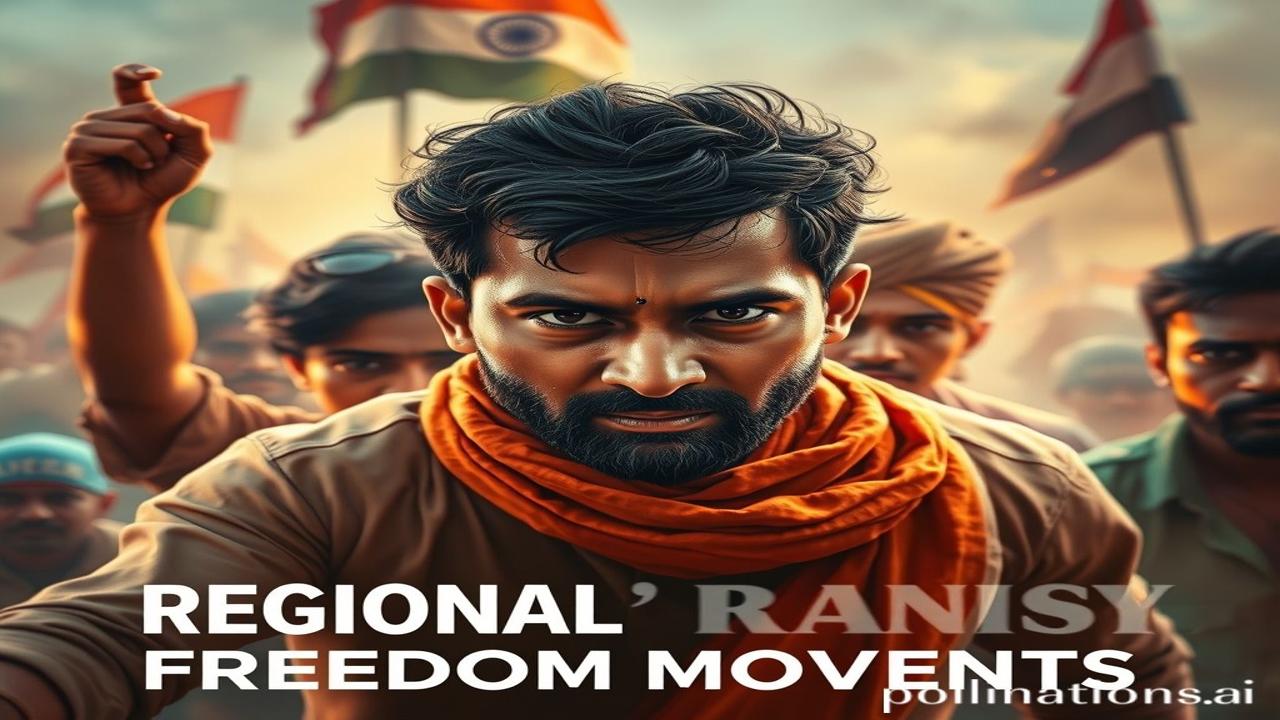Dhool Bhari Kitaabon Se: Regional Freedom Movements, Ek Nazar
Kabhi kabhi, jab hum itihas ki dhool bhari kitaabon ko kholte hain, toh kuch aisi kahaniyan milti hain jo dilon ko chhoo jaati hain. Stories of bravery, of resilience, and of a deep love for the dharti maa. Today, we’re diving into the unsung heroes and the vibrant spirit of India’s regional freedom movements. Imagine walking down a narrow lane in Bengal in the 1920s, the air thick with the smell of incense and rebellion, the rhythm of drums echoing tales of resistance…
Historical & Cultural Context: Kya Hai Ye?
So, what exactly are regional freedom movements? Think of them as the capillaries that fed the larger body of India’s struggle for independence. While names like Gandhi and Nehru often dominate our history books, it’s crucial to remember that countless regional movements, driven by local issues and led by local heroes, fueled the fire of azaadi.
These movements weren’t just mini-versions of the national movement. They often had their own unique flavors, addressing specific grievances of their regions. From the Moplah Rebellion in Kerala (1921) to the Bardoli Satyagraha in Gujarat (1928) and the Quit India movement which had local variations in Uttar Pradesh, Bihar and other states – each had its own spark and identity. They happened throughout the late 19th and early 20th centuries, contributing immensely to the overall momentum towards independence.
Zameeni Sach – Log Aur Jeevan: Ek Jhalak
Picture this:
- Telangana, 1940s: A farmer named Komaram Bheem rallies his Gond tribe against the Nizam’s oppressive rule. He dreams of jal, jangal, zameen – water, forest, and land for his people. Imagine him, fierce and determined, his voice echoing through the dense forests.
- Bengal, Early 20th Century: Bina Das, a young college student, boldly attempts to assassinate the British Governor during a convocation ceremony. Her heart burns with the desire to break the chains of oppression. “Ma,” she might have told her mother before leaving, “Aaj main apne desh ke liye kuch karne jaa rahi hoon.”
- Manipur, Late 19th Century: Rani Gaidinliu, a Naga spiritual and political leader, leads a rebellion against the British Empire, inspired by her guru Haipou Jadonang. She fights for the religious and political freedom of her people, becoming a symbol of defiance at a young age. Picture her, leading her warriors, the scent of damp earth and gunpowder filling the air.
These were not just names in textbooks; they were real people with dreams, fears, and unwavering courage.
Dharohar Aur Pehchan: Aaj Bhi Zinda Hai!
The spirit of these regional movements still resonates in today’s India. We see it in the preservation of local languages and cultures, in the fight for land rights for indigenous communities, and in the celebration of regional heroes. Even the way we approach social justice issues today owes a debt to these movements that taught us the power of grassroots activism and local empowerment. Bharatiyata is not just about a unified national identity; it is about the beautiful mosaic of regional identities that make India unique and vibrant.
Mazedaar Tathya ya Bhram-Bhanjak: Did You Know?
Log samajhte hain ki these regional movements were just smaller, less significant versions of the national movement. Lekin asli sach yeh hai ki they were often more radical and addressed deeply rooted local issues that the national leadership sometimes overlooked. These movements empowered marginalized communities and gave voice to the voiceless, creating a more inclusive and democratic vision of India.
Drishya Aur Bhavnaayein: Ek Anubhav
Imagine standing in front of a small memorial dedicated to the freedom fighters of a lesser-known rebellion. The air smells of dust and jasmine flowers offered by local devotees. The temple walls, worn by time, whisper stories of sacrifice and resilience. The sounds of children playing nearby blend with the echoes of freedom slogans chanted generations ago. You can almost feel the energy and the passion that fueled these movements.
Antim Vichar ya Uddharan:
These regional movements teach us that freedom is not just a political concept; it’s a feeling, a spirit, a relentless pursuit of justice and equality. They remind us that history is not just about the big names and dates, but about the stories of ordinary people who dared to dream of a better future.
As the poet Rabindranath Tagore wrote: “Ekla cholo re” – “If no one responds to your call, then go your own way alone.” This is the spirit that fueled India’s regional freedom movements and continues to inspire us today.
